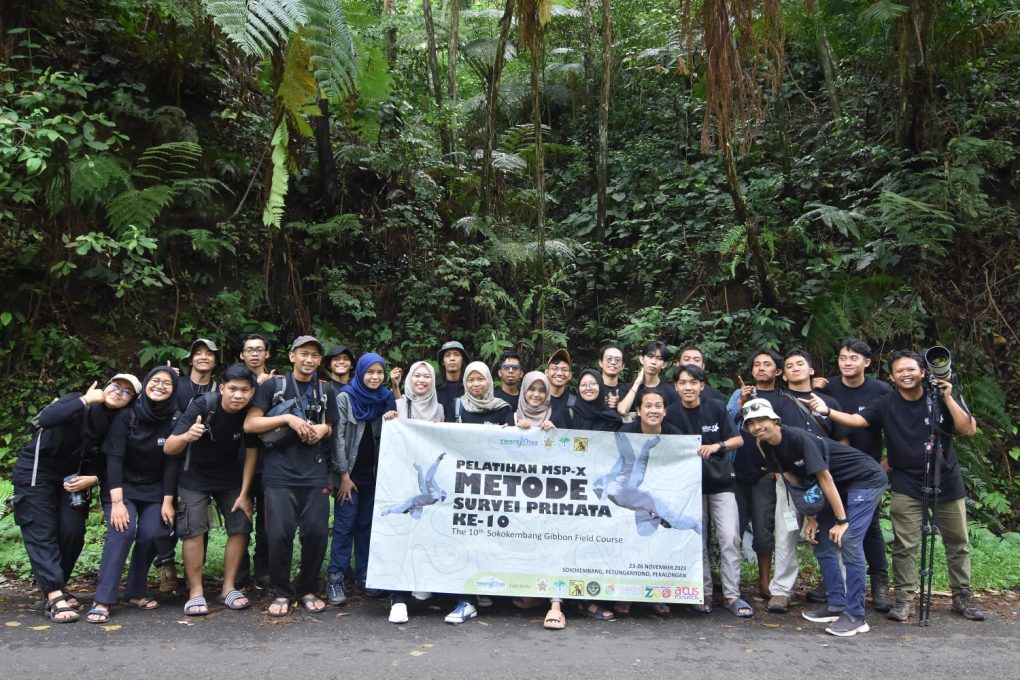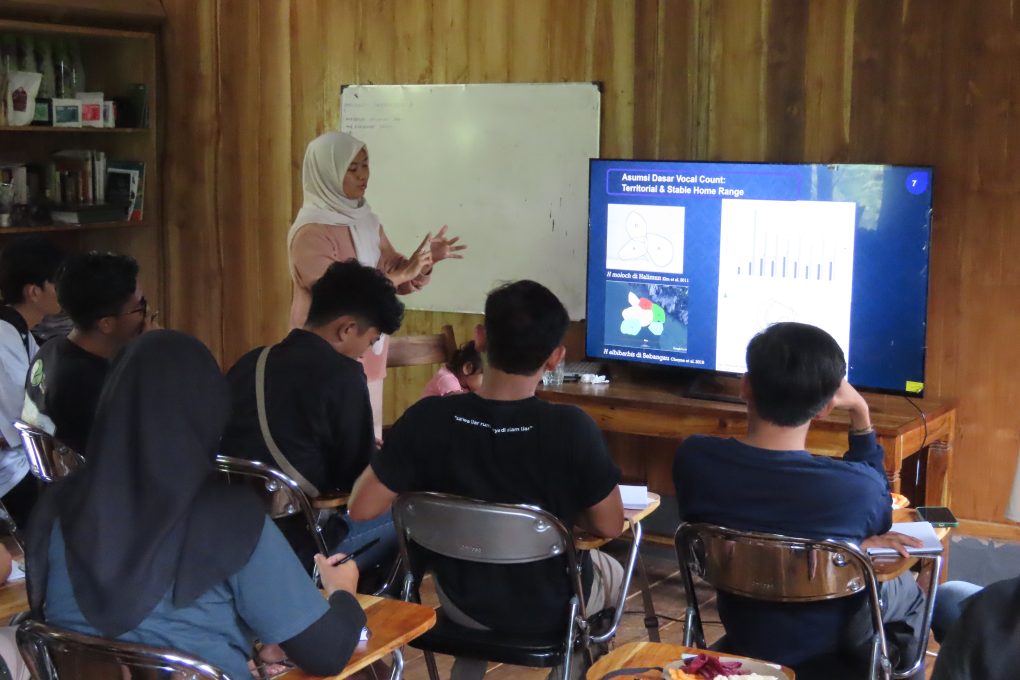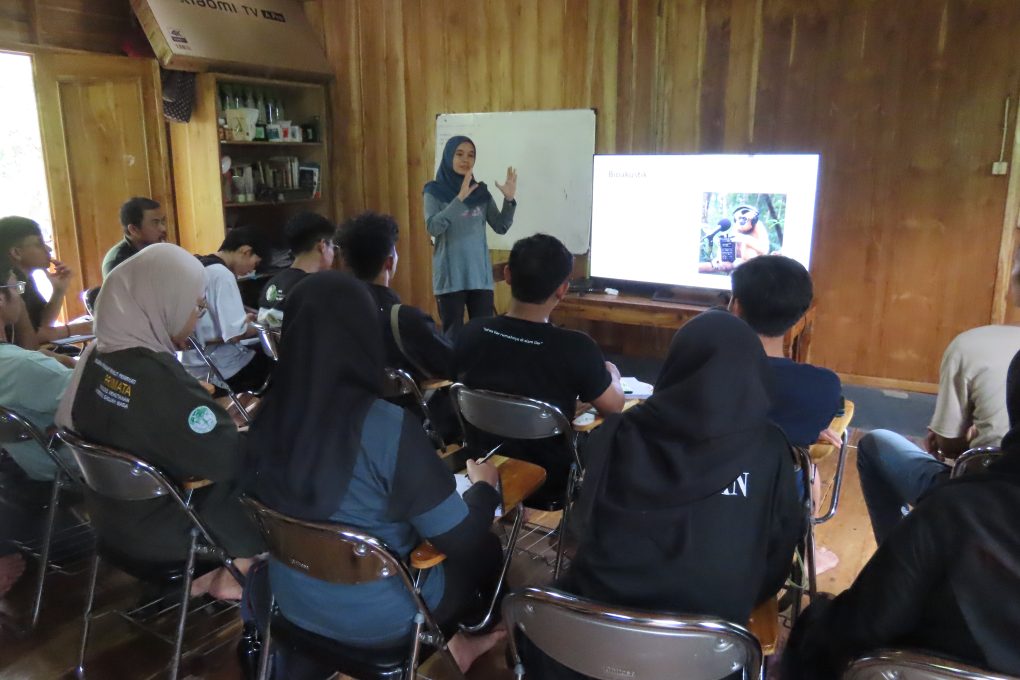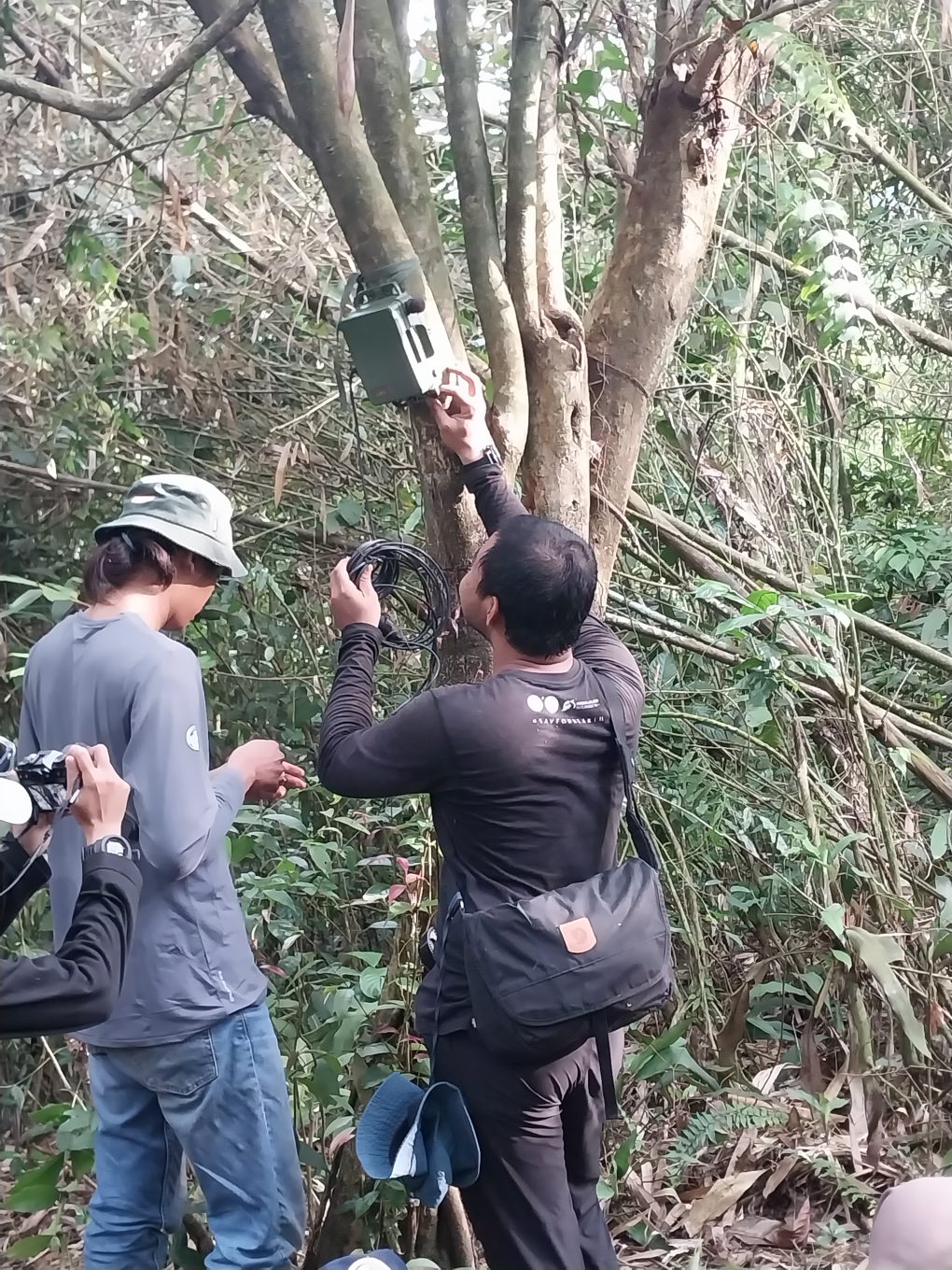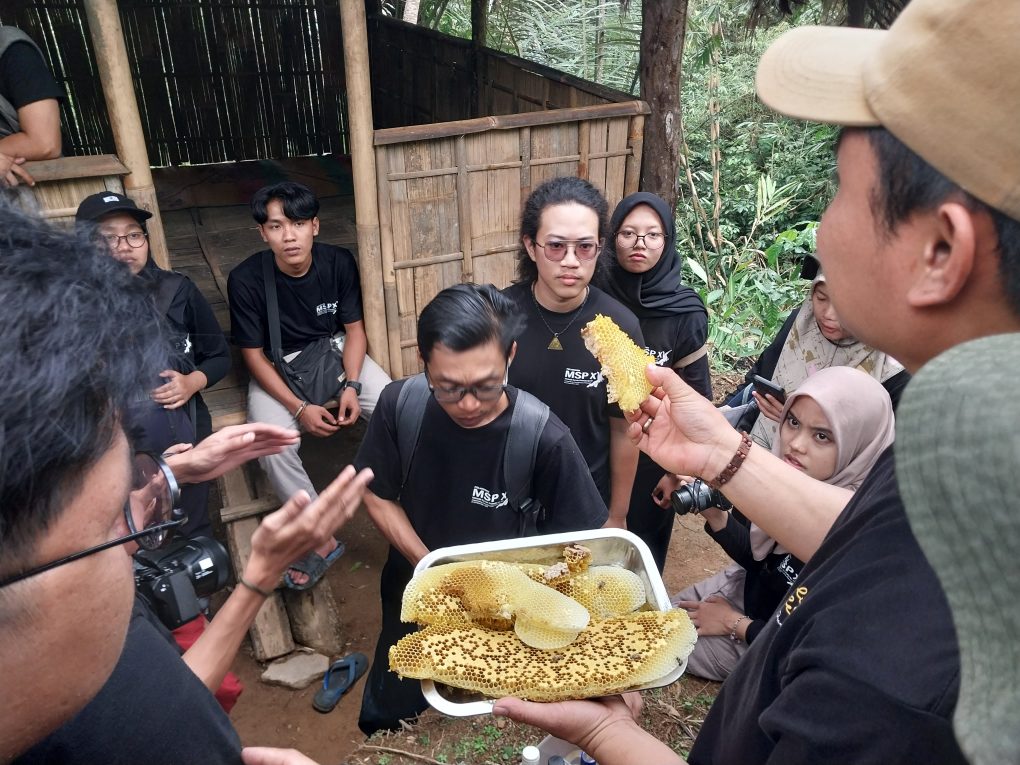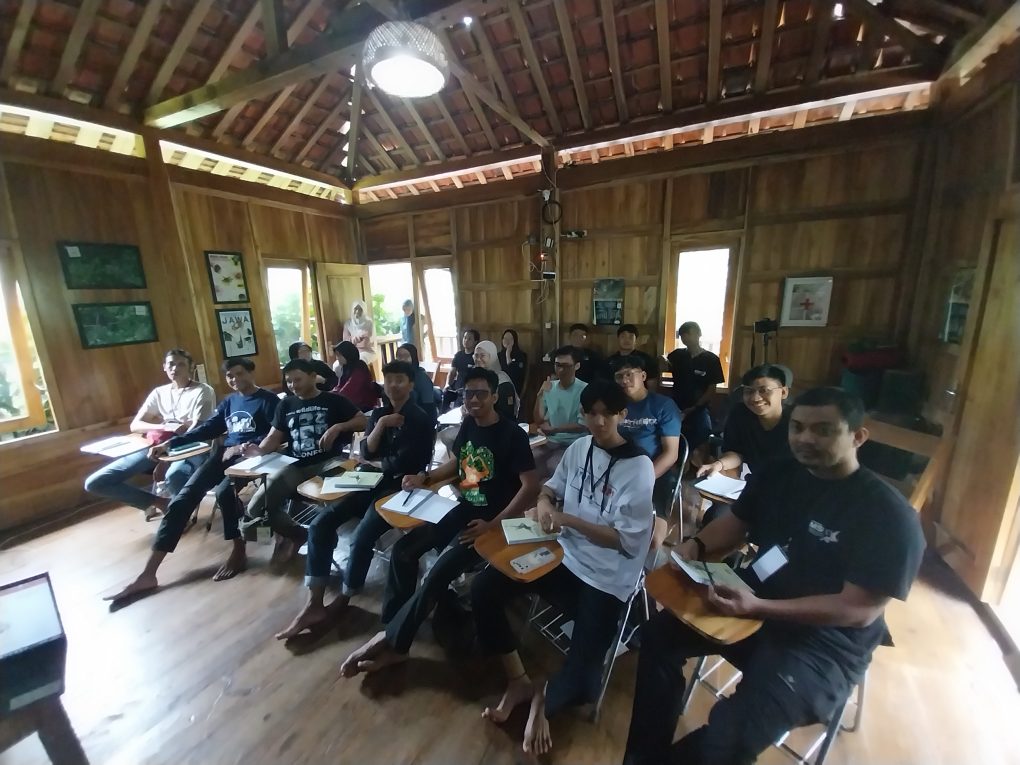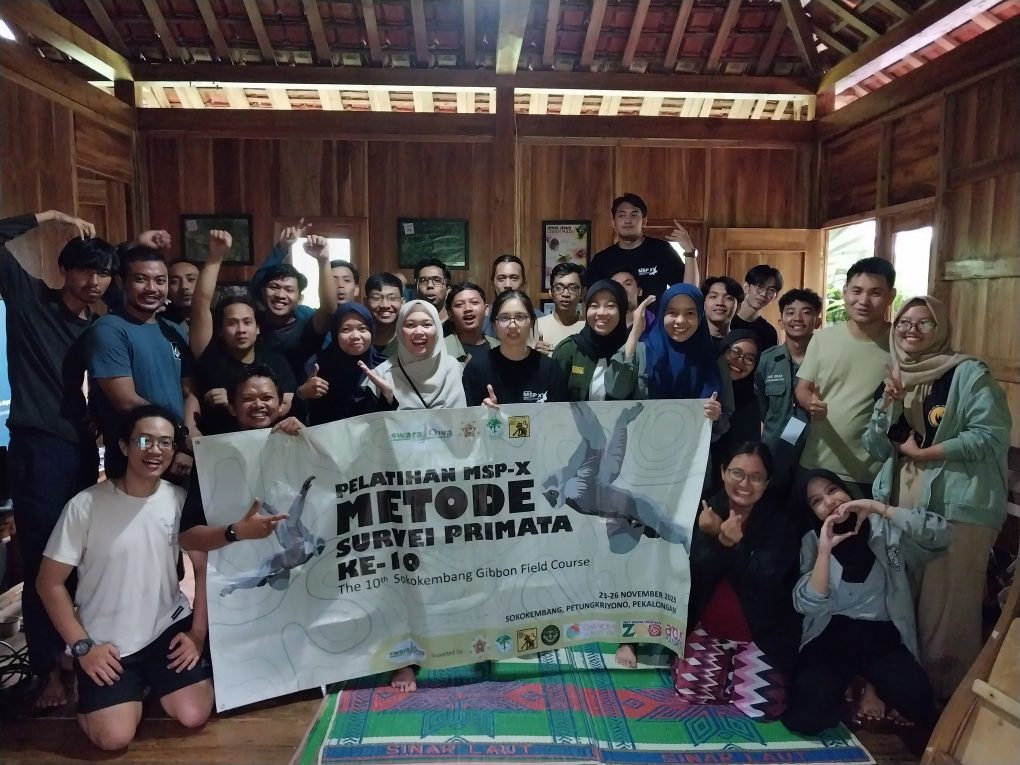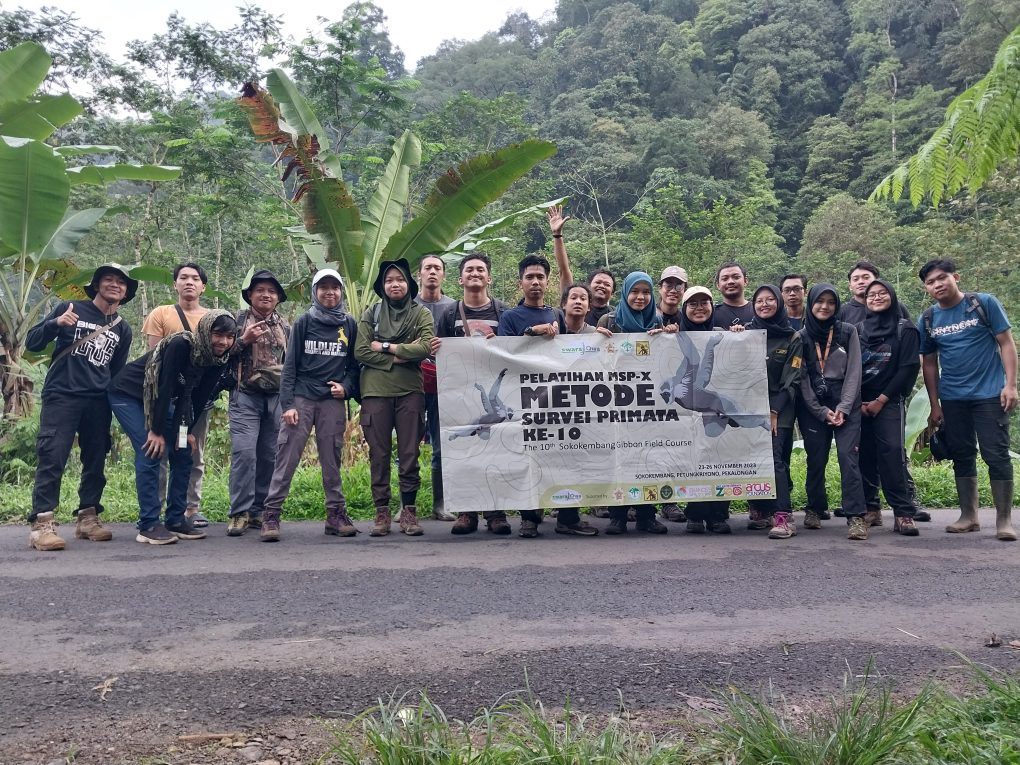On 22-26 November 2023, the 10th in 2023 Primate Survey Method (MSP) Training series known as Swaraowa’s gibbon field course was held, located at swaraowa’s field station, in Sokokembang Forest, Petungkriyono district, of Pekalongan Regency, Central Java. MSP is an annual activity organized by Swaraowa in collaboration with the Primate study Group at Gadjah Mada University, and this year national level participation representation of the presence of 9 species of gibbons in Indonesia, Kalimantan regions, Sumatera regions, and Java, we selected from various NGO, Universities, and forestry government staff.
a Technical Meeting with participants was held on November 19 2023 by zoom. On November 21 2023, participants departed simultaneously from their respective regions . In the evening , participants and activity committee members introduced themselves one by one while sharing stories about gibbons from their respective regions as well as conservation activities to preserve gibbons or other primates.
The next morning, 23 November, officially started by the chairman swaraowa Arif Setiawan who introduce swaraowa and it’s conservation project in Pekalongan since 2012, and introducing history of MSP that first conducted in 2013 until MSP 2022 there are 180 alumni, some of them are now have been working as gibbons researchers, and in the primate or conservation related job
The 2023 MSP invited totally 21 participants nationally, selected based on recommendation by their lecturer for students, by director or senior officer for NGO staff and govt officials. From Sumatera : Sekolah tinggi ilmu kehutanan Pantekulu Aceh, YOSL-Orangutan information Center North Sumatera, Zoologi Museum Andalas University West Sumatera, Hutan Harapan -PT. Restorasi Ekosistem Indonesia-Jambi, Riau University, Indo Global Mandiri University Palembang South Sumatera, and Malinggai Uma Mentawai, from Kalimantan : Ecositrop, Pustaka Tropis, Mulawarman University, Palangkaraya University, Fauna Flora International-West Kalimantan Project, from Java : Baraya Sanggabuana-Sanggabuana Wildlife Ranger, Biodiversity Society, Biolaska-Islamic university Yogyakarta, BKSDA (Central Java Nature Conservation Agency), Primate Study Group-Gadjah Mada University-Yogyakarta.
Fisrt talk an introduction to the gibbon population survey using the vocal count triangulation method Dieng landscape, delivered by Salmah Widyastuti, from IPB University who has just completed her doctoral promotion session. The vocal count triangulation method is classic methods to calculate the density of the gibbons.
After a lunch break, second talk on bio-acoustics and sound recognition of Javan gibbons, presented by Nur Aoliya, she is Swaraowa researcher who is currently studying for a master’s degree at IPB University with a thesis discussing the same topic, namely bioacoustics of Javan gibbons. These topic is relatively new for all participants.
In the evening, the participants who had been divided into three groups were gathered again to listen to the final lecture of the day about collecting voice data using the SM4 passive voice recorder which will be put into practice the next day by Kurnia Ahmaddin, biodiversity assistant of Swaraowa. Data analysis on the presence of Javan gibbons was carried out using the great call sound from female Javan gibbons using the Raven Pro software.
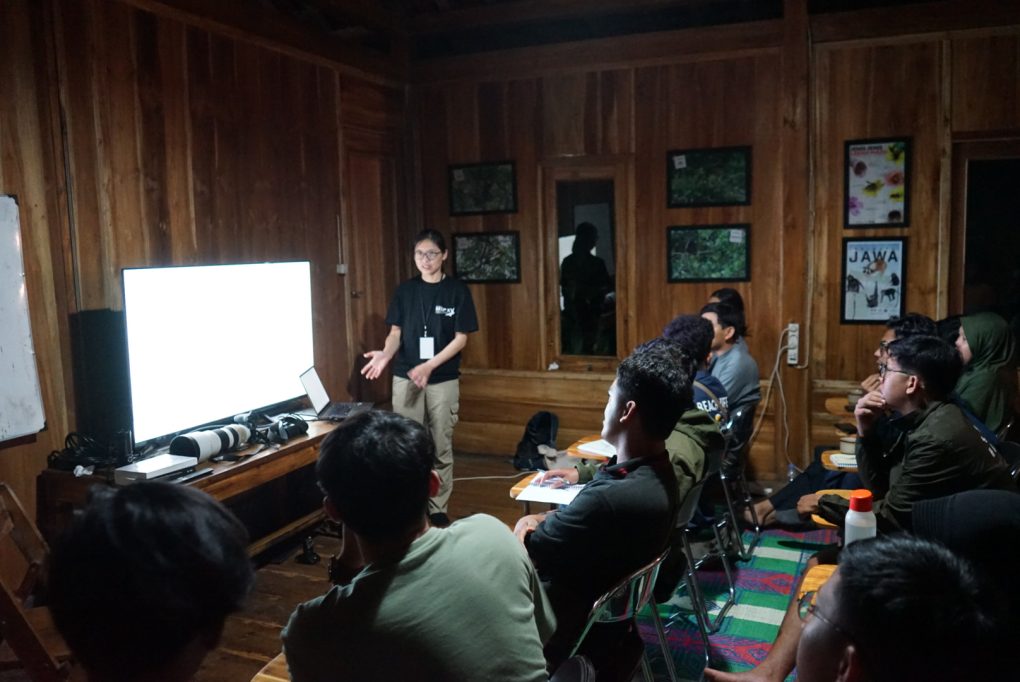
Yan Lu- Cloud Mountain Conservation Foundation China, give her talk on Black Crested Gibbon and conservation in China
On the scond day, as an implementation of the previous day’s teaching, field activities were carried out which were divided into 3 Listening Posts (LP). to reach LPs we starts simultaneously at 06.30 a.m to 10.00 a.m and pasive voice recorder SM4 is installed in the same time records in the same time periode with manual listening activities. The day’s activities continued with population data analysis using Google Maps Pro from the vocal count triangulation method, to map gibbon distribution by its calls.
In the evening, MSP guest lecture who invited from China, give a talk, Ms Yan Lu, co-founder Cloud Mountain Conservation Foundation and vice chair of IUCN SSA, she and her colleagues work on Black-crested Gibbon (Nomascus hainanus), share her experience on gibbon conservation status in China and more detail on how’s her NGO working with local community to save Black-crested Gibbon.
(video by Zhao Chao, Javan gibbon feeds on insect)
On the third day, all participants that have divided in three groups, doing same procedure data collection as previous days, started at 6.30 till 10.00 at LPs, records all gibbons vocalization that being heard. Participants guided by swaraowa’s team who have been conducted this methods since 2012 for gibbon survey in central java. At the end of time all team back to the field station remove all pasive voice recorders. Back at field station participants conducted data analysis based on two days data collection at LPs and basic analysis of vocalization which recorded at pasive voice recorder using raven software. Participants also write all these reports and prepare presentation talk that will be presented at the end of the session training.
The fourth day, in the morning with all participants we conducted primate watching, to see all four primates in Sokokembang forest closely. Pick up truck, called Doplak was used to ride and standing observe primates along the road of sokokembang forest. Road in Sokokembang forest is the best way to spot all four primates species, they are semi habituated due to human, because this main road to Petungkriyono district, and people have already aware about these primates are protected. In less then two hours all four primates are spotted. Including gibbon morning calls and Javan surili who make loud alarm calls. Participants learn about four difference characters of primates in Sokokembang and free discussion among of them during priamate watching. During primate watching our colleague from China who join with us, spotted gibbon feed on insect, a very rare moment that gibbon usually eats more fruits.
After we did primate watching, all participants were visited one of swaraowa’s community beekeeping program, in Setipis village. In this village participants learn about how beekeeping helps community, pollinate crops and honey production. Beekeeping learning center was build collaborate with beekeeper to promote beekeeping and conservation in the gibbon habitat.
And the last session for all participants is presentation talk, every group presenting their findings and result during research simulation to estimate gibbon population in Sokokembang forest. Closing for the MSP 2023, is durian party, king of fruits harvested freshly from agro-forest surrounding.
on behalf of swaraowa, we would like to thanks Fortwayne Children’s Zoo, Arcus Foundation, Ostrava Zoo and Chance for Nature, for all support to fund this training course, thank you to Perhutani KPH Pekalongan Timur and Govt of Pekalongan Regency and MSP2023 commitee, KP3 Primata and many people directly involved.
written by : Arif Setiawan, for article in bahasa read in blog https://swaraowa.blogspot.com
